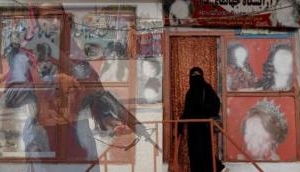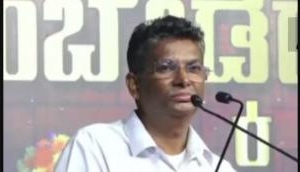
Last week, Catch carried an article by a respected journalist titled 'Students won't learn anything without the pass or fail education system'. The author essentially argued two points:
The first was a question: Why were we messing with an education policy that has produced a global talent pool which has "President Obama himself worried"?
Second, it argued that there was nothing like a pass and fail system, heavy school bags and teachers vested with the authority to punish, to make Indian children "mentally and physically strong".
Also read -
Students won't learn anything without the pass or fail education system
Both arguments reflect the view that because of a few successful NRIs, India is shining in every imaginable way.
Here are some facts to chew on:
When the Millennium Development Goals were formulated in 2000, one was to achieve universal primary education. Fifteen years later, 97.6% children in the 6-14 age group were enroled in primary school, and so this MDG was declared a roaring success. Then came the Sustainable Development Goals, or SDGs, with a new education goal: Quality Education.
Research shows that all the push on quantity of school enrolments has not translated into literacy.
A pressing need to strengthen education policy
Few may be aware that the education NGO Pratham's annual ASER survey has been showing a steady decline in learning outcomes across states. In its 10th survey, completed in 2014 and covering 596,229 children in 16,497 villages of 577 rural districts, revealed some shocking facts:
Less than half of fifth graders could read second grade textbooks
Close to 20% could read only letters but not words
14% could read words but not sentences
19% could read sentences but not longer text.
32.5 % of second graders could not recognise letters
Half of all fifth graders could not do basic subtraction
56% eighth graders could not do basic division
India has nearly 80 million children enrolled in classes III, IV, V. In absolute numbers, the ones who are falling behind would constitute a national learning emergency. Therein lies the biggest reason to fix India's education policy.
Awaiting a policy that takes everyone along
While we celebrate the Sundar Picchais and Indira Nooyis and Venkataraman Ramakrishnans who provide heroes for the dreams of many students, let's not forget that for every celebrity Indian, there are more who are demotivated, psychologically depressed, contemplating leaving school and on the brink of suicide.
Data from the National Sample Survey Organisation shows that 13 out of every 100 Indians between 5-29 years old did not attend school or dropped out because they did not consider education "necessary." This trend is more marked among rural students with 34.8% dropouts, including those who have never attended school, indifferent to studies.
India's youth suicide rate is among the world's highest. A report says the stresses of economic and social transition are killing the country's young people. Each year, 30-40 people per 100,000 Indians aged 15 to 29 kill themselves. This accounts for about a third of all suicides in the country. In 2013 alone, 2,471 suicides were attributed to "failure in examination".
The HRD ministry had set up a committee under TSR Subramaniam to recommend a new education policy. The panel, whose report is awaiting release, is expected to have suggested significant changes. In an interview with FirstPost, Subramaniam said all his panel's recommendations are tailored to address two major problems.
"The first of the two key problems we had to address was the quality of education. There is a deterioration of quality over time, so we had to address that. In fact, the quality is pathetic, the data about education was not correct. During our research, startling numbers came out. We have a serious issue with quality," he said.
"The second was a more subtle, nuanced kind of problem: inclusivity," he added, speaking about the need to make education inclusive for backward sections of the society who could not cope with the system.
By letting these two fundamental principles to steer the education policy, India can hope to achieve inclusive quality education for all.
More in Catch - #RTE at 6: Our focus should be on learning how to learn - Madhav Chavan
#RTE@6: Dear Rajasthan, don't fail us
First published: 7 June 2016, 8:56 IST







![BJP's Kapil Mishra recreates Shankar Mahadevan’s ‘Breathless’ song to highlight Delhi pollution [WATCH] BJP's Kapil Mishra recreates Shankar Mahadevan’s ‘Breathless’ song to highlight Delhi pollution [WATCH]](https://images.catchnews.com/upload/2022/11/03/kapil-mishra_240884_300x172.png)

![Anupam Kher shares pictures of his toned body on 67th birthday [MUST SEE] Anupam Kher shares pictures of his toned body on 67th birthday [MUST SEE]](https://images.catchnews.com/upload/2022/03/07/Anupam_kher_231145_300x172.jpg)






